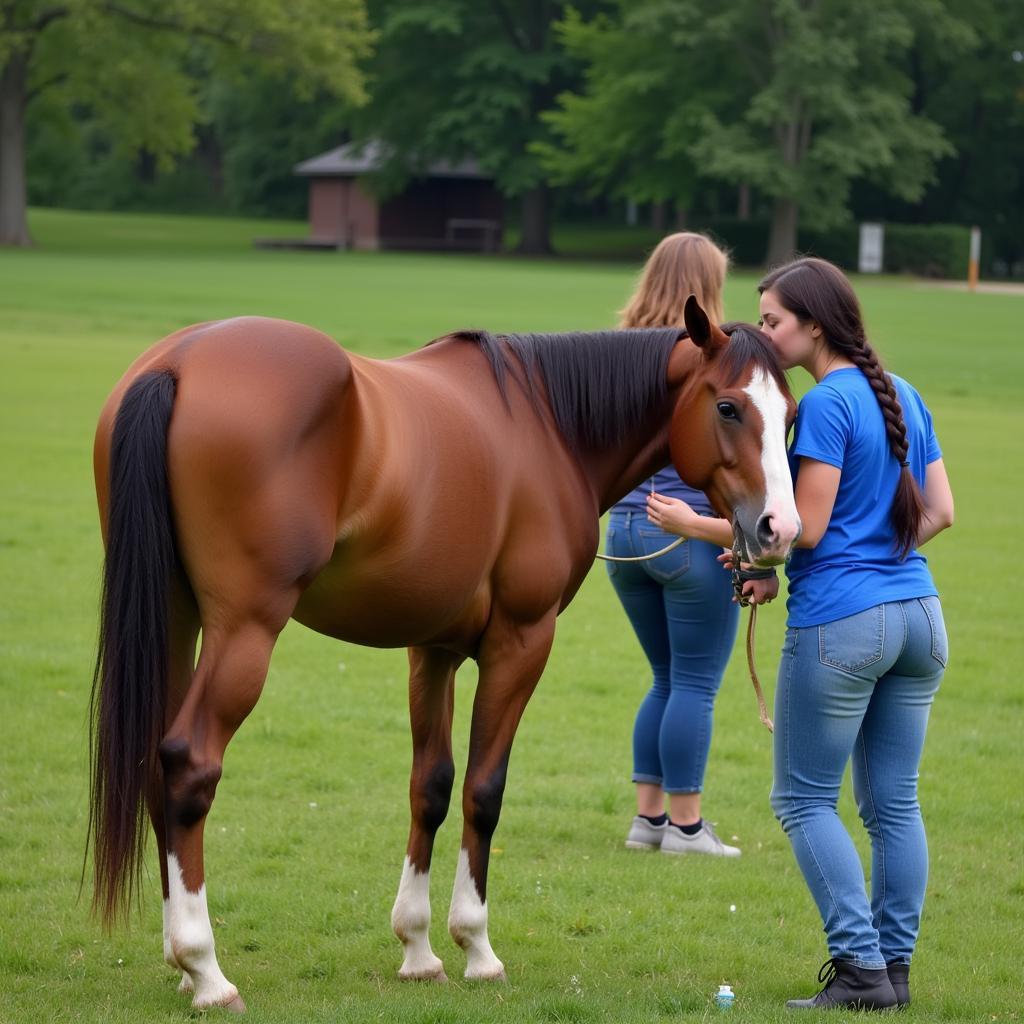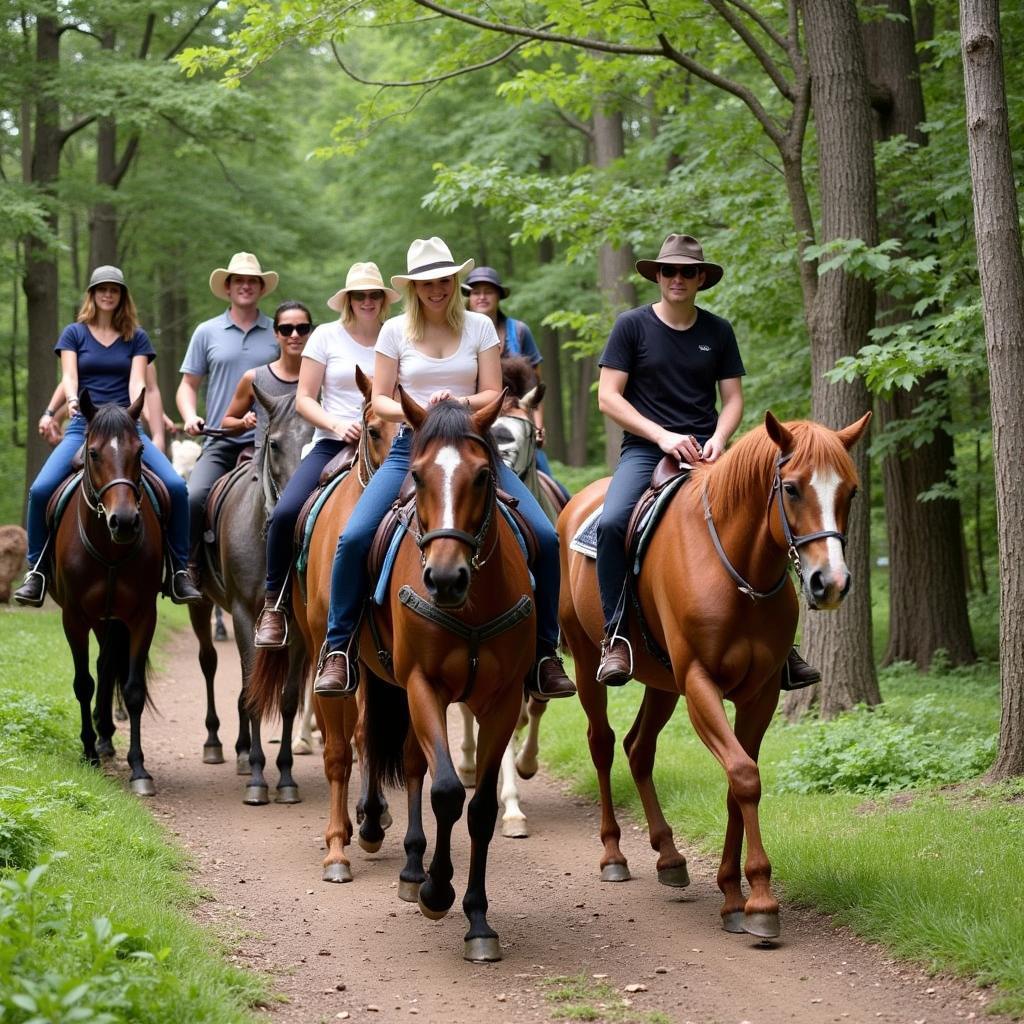The term “Butter Horse” might conjure up images of a horse made of, well, butter. However, in the equestrian world, it refers to a specific type of horse known for its calm disposition and smooth gaits, making them feel like riding a stick of butter. This article delves into the world of butter horses, exploring their temperament, common colors, and the care they require.
 Palomino Butter Horse Gelding
Palomino Butter Horse Gelding
Understanding the “Butter Horse” Term
“Butter horse” isn’t a recognized breed but rather a term of endearment used to describe horses known for their exceptionally smooth gaits and laid-back personality. These horses are typically easy to handle, willing to please, and forgiving to ride, making them suitable for both novice and experienced riders.
Temperament Traits of a “Butter Horse”
While breed can play a role in temperament, certain traits are commonly associated with “butter horses”:
- Calm and Relaxed: These horses rarely spook easily and remain composed in new environments.
- Smooth Gaits: They are known for their comfortable gaits, making for a pleasant riding experience.
- Willingness to Please: They are eager to learn and work with their riders.
- Forgiving Nature: They tend to be tolerant of rider errors, making them suitable for beginners.
Common “Butter Horse” Colors
While any breed can produce a “butter horse,” some colors are often associated with this term due to the breeds known for calm temperaments:
- Palomino: This beautiful golden coat with a flaxen mane and tail is often linked to the “butter horse” image. Palominos are known for their generally gentle nature.
- Chestnut: Chestnut horses, with their reddish-brown coats, are another popular choice for those seeking a “butter horse.” Some chestnut horse breeds, like the Quarter Horse, are known for producing individuals with calm temperaments.
- Buckskin: Similar to palomino, buckskin horses have a tan or gold coat but with black points (mane, tail, and lower legs). They are another color often associated with the term.
Caring for Your “Butter Horse”
 Grooming a Butter Horse
Grooming a Butter Horse
Regardless of breed or color, all horses require consistent care to thrive.
- Nutrition: Provide a balanced diet of quality hay, grain (if needed), and fresh water.
- Veterinary Care: Schedule regular checkups, vaccinations, and dental care with an equine veterinarian.
- Hoof Care: Ensure regular farrier appointments for trimming and shoeing (if necessary).
- Exercise: Provide daily turnout and exercise to keep your “butter horse” physically and mentally stimulated.
- Grooming: Regular grooming helps maintain a healthy coat and allows you to check for any skin issues.
- Training: Consistent training reinforces good behavior and helps build a strong bond between you and your horse.
Finding Your Perfect “Butter Horse”
While the term “butter horse” is subjective, understanding the traits and care requirements will help you find a horse that fits your riding style and experience level. Remember, spending time with a horse before purchasing or adopting is crucial to assess their temperament and suitability.
Is a “Butter Horse” Right for Me?
A “butter horse” can be a wonderful companion for riders of all levels. However, it’s essential to consider your individual needs and riding goals. If you’re a beginner, a “butter horse” can provide a safe and enjoyable learning experience. For more experienced riders, these horses can offer a relaxing and therapeutic ride.
Beyond the “Butter Horse” Label
 Trail Riding with a Butter Horse
Trail Riding with a Butter Horse
While the term “butter horse” helps paint a picture of a specific type of equine personality, it’s crucial to remember that each horse is an individual. Just like humans, horses have unique personalities, quirks, and preferences.
Don’t be swayed solely by the label. Instead, prioritize spending time with any potential equine partner, regardless of color or breed, to determine if their temperament and your riding style truly mesh.
Do you have any questions about “butter horses” or other equine-related topics? We’re here to help! Contact us at Phone Number: 0772127271, Email: [email protected], or visit us at QGM2+WX2, Vị Trung, Vị Thuỷ, Hậu Giang, Việt Nam. Our team is available 24/7 to assist you. You can also find more helpful articles and resources on horse toys and accessories, young female horse names, and palomino horse names on our website.